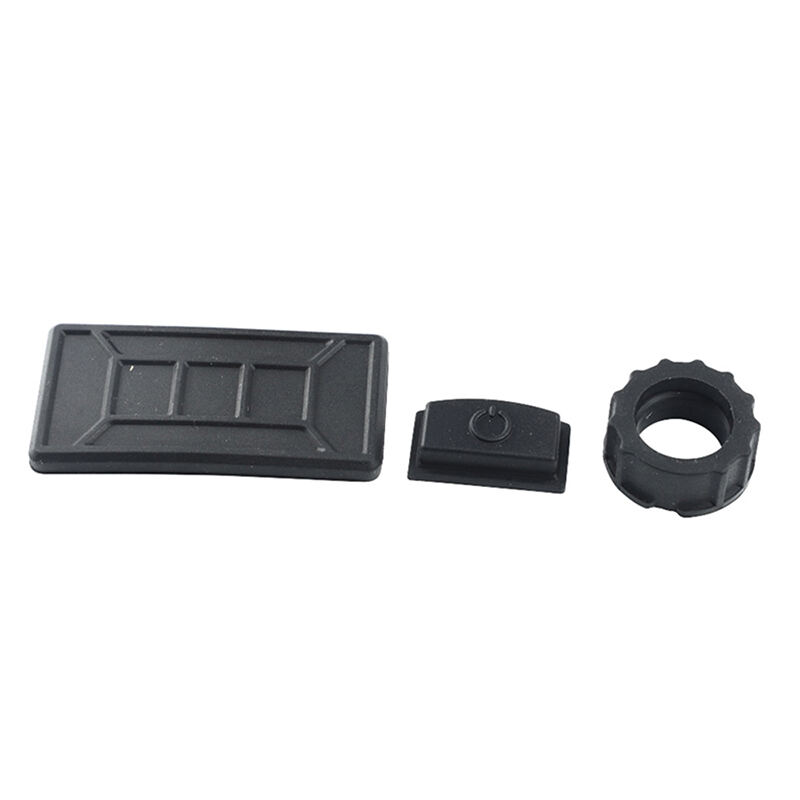Importance of Material Selections in Injection Molding
Injection molding is the most common method for manufacturing, which relies on forcing molten plastic through a die to create a variety of goods. The selection of the material is crucial to getting positive results from injection molding. Careful consideration of material selection plays an important role in the performance, reliability and longevity of a finished product. There are many variables that can affect the success of material for injection molding, and such elements must be taken into consideration when choosing them.
Injection Molding Material Selection Factors
Deciding the material for injection molding requires a wide variety of aspects like whether it fits with part design, moulding process and end-use application. Some of the key considerations you should take into account when choosing injection molding materials are:
Mechanical properties
When selecting materials for injection molding, aspects such strength, stiffness and resilience (also called impact resistance) play critical roles in the mechanical properties of these materials. The material selected needs to be able to deal with the forces and stresses that are likely to occur over the lifetime of a product. It helps in making the products durable and long-lasting, which can withstand external threats.
Moldability
One of the main things to think about when choosing materials for injection molding is their moldability. The materials used in SLS for these parts need to be workable without affecting part integrity or quality, which is critical when the design involves using natural fibers. When making custom products, it is important to use materials that can be molded or bent but without losing their core strength so the end product meets all necessary guidelines.
Cost
Material cost also plays a significant role while choosing materials in injection molding. Balancing the material cost with characteristics and performance just like in any engineering application is imperative. It is essential that the chosen material meets all of these demands, while still being cost-efficient so as to make economic use of the manufacturing process.
End-use application
One of the most important factors to consider when choosing an injection molding material is its intended end-use application. Various parameters, which include temperature resistance, chemical exposure and UV retention need to be taken into account so that the material can fulfill its purpose under operating conditions of intended application. When manufacturers use the materials developed specifically for their application type, they can guarantee that productivity and life expectancy are optimal.
What Are The Common Materials of Using Injection Molding - Properties
Injection molding materials Here are materials that come into the most common use in injection molding and their characteristics.
Polypropylene (PP)
It is a lightweight material and well resistant to chemicals; the mime fluid can be changed at ease, since it does not suffer much corrosion from NIR. This material is used frequently in the manufacture of automotive parts, packaging, and consumer goods. The fact that this material is so light combined with being non-reactive to the environment makes it a versatile choice for many applications.
ABS (Acrylonitrile Butadiene Styrene)
What Is ABS PlasticABS is short for Acrylonitrile Butadiene Styrene. Applications: Plastic windows for automobiles, displays on toys or electronic housing Because of its strength, durability and ability to withstand external forces, it is a very suitable option for the items which are supposed to provide resistance.
Polystyrene (PS)
PS is an amorphous transparent material used in the manufacture of disposable cutlery, consumer goods and packaging. Its transparency and its rugged nature make it an ideal choice when visibility is a big issue as well in structural cases.
Polyethylene (PE)
PE (polyethylene) a widely used material in production of plastic bags, toys and consumer goods with good reason. Excellent chemical resistance and moisture proof. It is resistant to environmental factors and makes a good material with which it has been applied in numerous creative forms.
Polyamides (Nylon)
High-performance nylon is one of the most widely used engineering thermoplastics. It is highly resistant to abrasion, chemicals and moisture. Its hardness and protection resistant tendencies from wear, fire, elements make it ideal for a range of rugged applications.
Optimizing Part Design for Maximum Material Performance in Injection Molding
Optimization of the material properties and molding process is crucial for ensuring that injection molded materials deliver great performance. Here are a few tips to achieve perfect material performance while injection molding.
Proper drying
In most injection molding applications materials need to be dried in order for the material properties which are then within optimal processing conditions. Excessive water during washing or the presence of moisture can change both microscopic and macroscopic properties, while drying helps in removing any residue. The material should be ensured free from moisture to avoid defects and subsequently in order not the final quality.
Mold design
The way the material performs in a mold, it is all down to how well they have designed that mold. To ensure maximum productivity, the mold must be designed to suit the material characteristics and any other special needs. Adapting the shape of the mold to what is required for a certain material feature (image: photonic integration)
Processing conditions have been optimized
To ensure the best performance of materials special attention must be given to processing conditions ie Temp, Pressure and Injection Speeds. Processing parameters need to be optimized so that material degradation, warping and delamination do not occur. Injection molding requires a fine-tuned control of processing parameters to deliver repeatable and high quality results.
Regular maintenance
Mold and injection molding machine maintenance should be carried out on a regular basis to achieve the best performance of materials. Routine maintenance can also detect any problems that may arise to the molding process and material properties. Ensuring that the production process can be run smoothly without any lost time through issues with equipment, a manufacturers will take care of their assets and reduce downtime.
Tips To Choose The Right Material For Your Injection Molding Project
There are many factors other than performance that can hinder the success of an injection molding project and determine which material you choose. Here are a few tricks to help you get the best material for your injection mold project.
Learn the end use-case
It is important to note the end-use application in order to choose which material to use for injection molding You need to put into consideration the environment it will be operating, temperature and exposure; therefore its first important that you know is they can suit in your application. Choosing the right materials that will cooperate with their product's environment, manufacturers can keep up its services and usability for longer.
Consider the part design
Part design has a crucial role in choosing the material for injection molding. Different materials may be great in complex design, but not so easy to do with simple designs. Producing parts that meet the desired specification is ensured by tailoring material properties with design requirements
Talk with a material supplier
Before engaging the molding process itself, consulting with a material supplier can be helpful as it is vital in choosing the ideal choice of your desired item for injection mold making. Suppliers often have a good understanding of material properties and can help you decide. By utilizing the knowledge base of material suppliers, manufacturers can gain insights to help make more informed decisions about which materials are best-suited for each application.
Consider cost
One of the most important factors that you have to take into account when choosing material for your injection molding project is cost. Balancing the material cost against a desired suite of properties and performance is key; It is imperative to select a material that meets all mentioned requirements and at the same time, prove cost effective in order for the manufacturing process to be economically feasible.
To sum up, the material selection for injection molding is crucial. The selection of materials is critical to achieve the desired performance, quality and longevity when building a product. Knowing these important factors, along with common injection molding materials and choosing the right material can help companies in selecting suitable material for their plastic projects resulting desired results.





 ONLINE
ONLINE